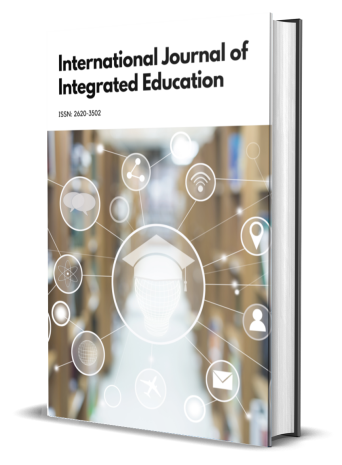Microbiological aspects in conservative treatment of generalized periodontitis using autotrombocytic mass
Abstract
The primary factor causing periodontal damage is plaque bacteria. The etiological structure of infectious processes in the last decade has changed significantly, due to the constant evolution of microbes and the involvement of opportunistic microbes in the pathological process, which can act as commensals in the normal microflora and manifest their pathogenicity with a decrease in the body's immune status. Inflammatory processes in the oral cavity are sometimes an endogenous infection caused by the resident flora of not only the oral cavity, but also other ecosystems of the body.
References
Akhmerov P.P., Zarudiya RF, Collection of guidelines for the use of platelet autoplasma. Plazmolifting technology, Plazmolifting TM. Moscow 2018 41p.
Bulyakov RT, Sabitova.R.I, Gulyaeva.O.A. Experience of conservative treatment of severe periodontitis using modern methods of destruction of biofilm and Plasmolifting technology Problems of dentistry. - 2014. - No. 1. - S. 54-58.
Grudyanov A.I., Frolova O.A., Isadzhanyan K.E., Popova V.M. The composition of the microflora of the oral cavity in patients with the initial forms of inflammatory periodontal diseases. // Dentistry. 2016. Vol.6.No.2.P.67.
Dmitrieva L.A. Periodontics: national guidelines / ed. prof. L.A. Dmitrieva. - M .: GEOTAR-Media, 2014 .-- 704 p.
Zorina O.A., Aimadinova N.K., Boriskina O.A., Basova A.A., Rebrikov D.V. The main changes in the normal microflora of periodontal disease in chronic generalized periodontitis, identified using metagenomic sequencing. // Russian dentistry. 2017; 10 (2): pp. 41-48.
Zorina O.A., Aimadinova N.K., Rebrikov D.V. Gender analysis of microbiomaparodontal pockets in patients with chronic generalized periodontitis. // Russian dental journal. 2016.20 (1): S.19-22.
Ovechkina M.V. Study of pathomorphological changes in gum tissue in the treatment of chronic inflammatory and inflammatory-destructive periodontal diseases using the regenerative method Plasmolifting ™. Part II [and others] // Periodontology. 2015. T. XX, No. 3 (76). P.23-25.
Aleksandrov M.T. Determination of the antimicrobial activity of drugs used in the complex treatment of patients with periodontitis / [and others] // Dentistry. 2009. No. 2. S.13-15.
Akhmerov R. R. Technology Plasmolifting - an injection form of platelet autoplasma for the treatment of chronic catarrhal gingivitis / [and others] // Periodontology. 2012. No. 4. S. 80-84.
Chobanov R.E., Mamedov R.M. Features of the settlement of different subbiotypes of the oral cavity Protozoa and Helicobacterpylori in inflammatory periodontal diseases // Periodontology. 2010. No. 3. S. 29-31.
S. Gupta, P.K. Jain, M. Kumra, S. Rehani, Y. Mathias, R. Gupta, M. Mehendiratta, A. Chander. Bacterial Viability within Dental Calculus: An Untrodden, Inquisitive Clinico-Patho-Microbiological Research // J. Clin. Diagn. Res. - 2016. - Vol. 10. - No. 7. - P. 71-75.
How, K.Y. Porphyromonasgingivalis: an overview of periodontopathic pathogen below the gum line / K.Y. How [et al.] // Front. Microbiol. - 2016. - Vol. 7. - No. 53. - P. 832-839.
13.C. Passariello, C. Passariello, P. Gigola, L. Testarelli, M. Puttini, S. Schippa, S. // Petti Evaluation of microbiota associated with Herpesviruses in active sites of generalized aggressive periodontitis / Ann. Stomatol. - 2017. - Vol. 8. - No. 2.P. 59-70.
Yamada M., Takahashi N., Matsuda Y., Sato K., Yokoji M., Sulijaya B., Maekawa T., Ushiki T., Mikami Y., Hayatsu M., Mizutani Y., Kishino S., Ogawa J., Arita M., Tabeta K., Maeda T., Yamazaki K. A bacterial metabolite ameliorates periodontal pathogen-induced gingival epithelial barrier disruption via GPR40 signaling. Sci Rep. 2018 # 13; 8 (1): 9008.
In submitting the manuscript to the International Journal on Integrated Education (IJIE), the authors certify that:
- They are authorized by their co-authors to enter into these arrangements.
- The work described has not been formally published before, except in the form of an abstract or as part of a published lecture, review, thesis, or overlay journal.
- That it is not under consideration for publication elsewhere,
- The publication has been approved by the author(s) and by responsible authorities – tacitly or explicitly – of the institutes where the work has been carried out.
- They secure the right to reproduce any material that has already been published or copyrighted elsewhere.
- They agree to the following license and copyright agreement.
License and Copyright Agreement
Authors who publish with International Journal on Integrated Education (IJIE) agree to the following terms:
Authors retain copyright and grant the International Journal on Integrated Education (IJIE) right of first publication with the work simultaneously licensed under Creative Commons Attribution License (CC BY 4.0) that allows others to share the work with an acknowledgment of the work's authorship and initial publication in this journal.






1.png)
